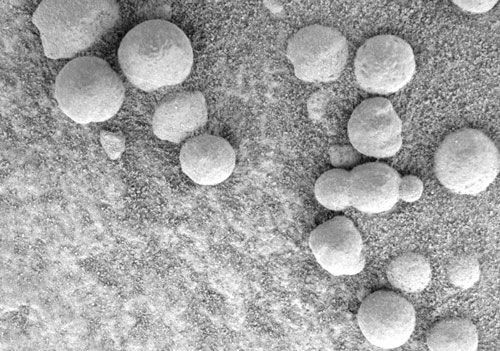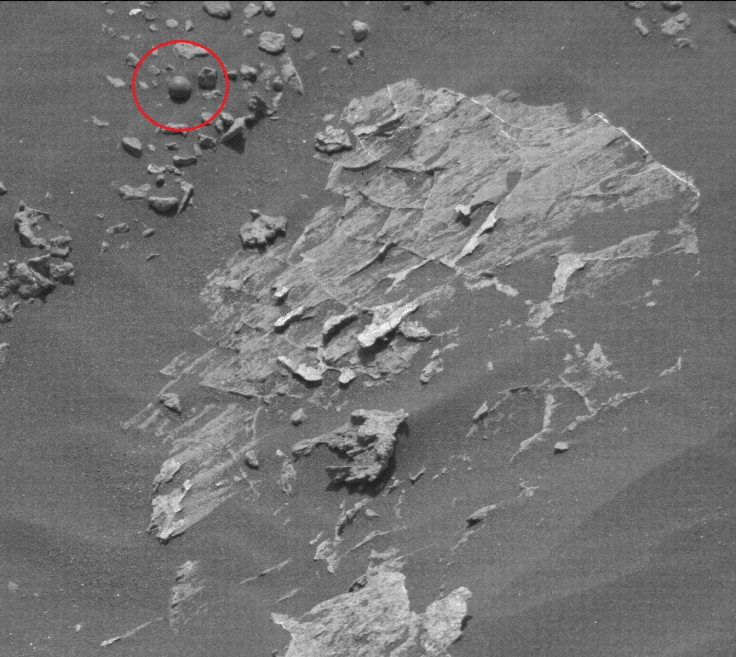That's Not A Cannonball On Mars, It's A Blueberry

Citizen scientists have some wild theories about where a sphere on Mars might have come from. The sphere was captured in a photo from the NASA Curiosity Rover that’s currently on the planet. The rover is constantly taking in the surface of Mars and sending photos and data back to Earth for analysis.
The photo in question is hosted online on a NASA database where anyone can access it. These photos are available for anyone to examine and explore to learn more about Mars. The photo made its way into a video by the YouTube channel WhatsUpInTheSky37, a channel that examines photos from space. The website UFO Sightings Daily then picked up the image of the sphere where Scott C. Waring, UFO hunter, wrote that he completely believes such metallic spheres were sent to Mars to destroy its atmosphere.

While the ball does look like a cannonball, it’s unlikely that it’s a cannonball that helped destroy the atmosphere of Mars and any life that was present on the planet. More likely, it’s another one of the "berries" NASA has previously found and identified on Mars. These berries, actually called spherules, were spotted by the Opportunity rover in 2004 were analyzed by the rover’s spectrometer.
The rover’s instruments found that the berries had a different composition than the rocks around them did. The researchers who looked into the composition of the berries concluded that they’re mostly made up of the iron-bearing mineral called hematite. After finding the hematite in the spherules, researchers were more confident in a theory that the spherules had formed inside of water-soaked deposits, according to NASA. The specific spherules that Opportunity studied were clustered together in a small indent in a rock that researchers called the “berry bowl.” This discovery helped researchers back up their theory that there was once water on Mars.
"Many spheroid rocks on Mars are concretions that have eroded out of softer matrix rock, such as copious iron-containing spherules examined by the Opportunity rover," Guy Webster, from the media relations office at NASA's Jet Propulsion Laboratory, told International Business Times. "Spheroid concretions of various sizes and compositions also occur naturally on Earth," Webster said.
The image that surfaced more recently shows a similar one of these blueberries, it’s just more isolated than the previous berries the Opportunity found. Some of the new photos of the berry show it with a blue color compared to its red and brown surroundings, but that coloring was added later and is not necessarily accurate, or how it appears in reality. Check NASA's website for other raw photos of Mars.
© Copyright IBTimes 2024. All rights reserved.




















